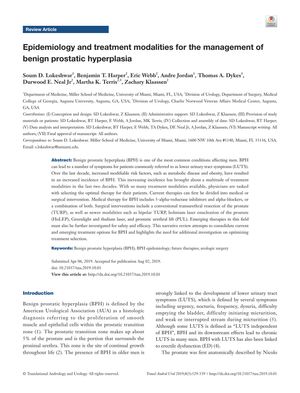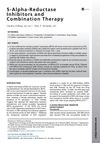Epidemiology and Treatment Modalities for the Management of Benign Prostatic Hyperplasia
October 2019
in “
Translational Andrology and Urology
”
finasteride dutasteride 5-alpha-reductase inhibitors alpha-blockers tamsulosin doxazosin transurethral resection of the prostate TURP bipolar TURP holmium laser enucleation of the prostate HOLEP Greenlight laser therapy thulium laser therapy prostatic urethral lift PUL intraprostatic injections prostate artery embolization PAE convective water vapor ablation Rezūm robot-assisted prostatectomy Propecia Avodart Flomax Cardura Greenlight

TLDR More men are getting benign prostatic hyperplasia, and there are many treatments, from medication to surgery, with new methods being developed.
The 2019 document reviews the increasing incidence of benign prostatic hyperplasia (BPH) and the range of treatment options available. It notes that BPH incidence is rising with modifiable risk factors like metabolic disease and obesity. Medical treatments include 5-alpha-reductase inhibitors (finasteride and dutasteride) and alpha-blockers (tamsulosin and doxazosin), which can be used alone or in combination. Surgical options include the traditional transurethral resection of the prostate (TURP) and newer techniques such as bipolar TURP, holmium laser enucleation of the prostate (HOLEP), Greenlight and thulium laser therapies, and prostatic urethral lift (PUL). Emerging therapies like intraprostatic injections and prostate artery embolization (PAE) are discussed, with PAE showing fewer complications compared to TURP in one study. Minimally invasive procedures like convective water vapor ablation (Rezūm) have shown promising results over three years. Robot-assisted prostatectomy is also mentioned as having benefits over open surgery. The document emphasizes the need for personalized treatment selection and ongoing research to optimize outcomes.








